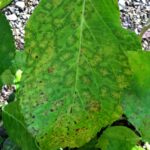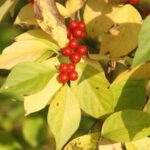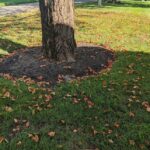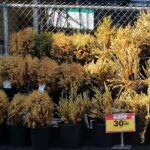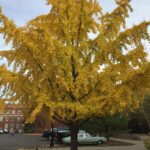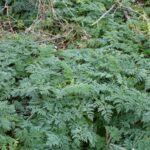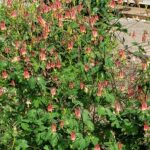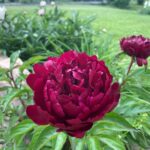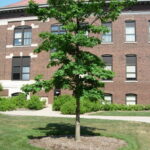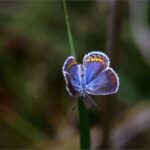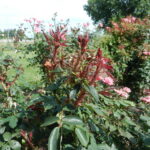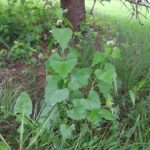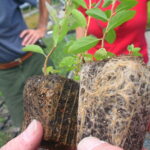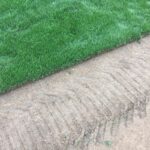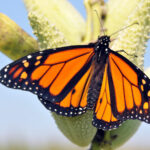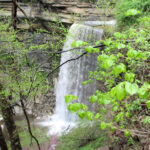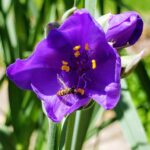Resources for landscapes and gardens in the Midwest
Search Results: weed
Planting may not be the first chore that comes to mind when considering the fall garden, but as Purdue Urban Forestry Specialist, Ben McCallister mentioned in the last issue, it’s an excellent time to install a new tree1. However, trees aren’t the only thing that can be added to the[Read More…]
Read MoreHelp IR4 Help You! The IR-4 Project provides the research necessary for pesticide registration on ornamental plants. IR4 operates as a unique partnership between the U.S. Department of Agriculture (USDA) – both the National Institute of Food and Agriculture (NIFA), the Cooperative State Research Education and Extension Service (CSREES),[Read More…]
Read MoreThe final month of summer is here, meaning children are returning to school and pools will be closing soon. The end of summer also signifies shorter days, cooler temperatures and a nearing finish line for the long marathon run by our cool season lawns. Summer is tough on the fescues,[Read More…]
Read MorePoison hemlock was introduced to North America as a garden/ornamental plant. It is a native of Europe, and it is a member of the Apiaceae (parsley) family. Purdue experts Bill Johnson and Marcelo Zimmer wrote about poison hemlock in a Purdue Pest & Crop newsletter. They wrote that poison hemlock[Read More…]
Read MoreFor some, the term “shade garden” may be an oxymoron. When imagining a garden, most will think of a sunny area filled with flowering plants. So, it’s not surprising that gardeners would often fill shady areas with a hardy, evergreen ground cover and never look back. However, ornamental shade gardens[Read More…]
Read MorePeonies are a common and favored landscape plant in Indiana. Despite their famed attribute of being easy to care for, some annual upkeep will ensure peonies continue to beautifully bloom year after year. Depending on the species and cultivar, peonies will bloom from late spring to early summer. Peonies were[Read More…]
Read MoreSpring in all its wild weather swings, plant growth and flowering glory has arrived, and along with it, the chore of mowing the lawn. Many decry the labor and monotony, but evidently some do enjoy the practice, as a new video game allows one to mow a virtual yard even[Read More…]
Read MoreIt’s that wonderful time of year again where temps are rising, life is coming back into the landscape, and people are thinking about how to improve the urban canopy around them. Well, maybe not that specifically, but we have the urge to plant trees. Whether it’s for Earth Day or[Read More…]
Read MoreIf you spend any time reading about native landscapes, you will quickly find numerous articles and guides for plants that are good for pollinators. Many native pollinator species are in decline, and choosing plants that support their lifecycle is a great way homeowners and landscapers can engage with the effort[Read More…]
Read MoreRose rosette disease is a severe problem for rose growers and occurs widely throughout many rose growing regions of the US, especially from the mid-South into the Midwest. The problem was described on roses in the early 1940s but actual cause of the disease remained murky until the pathogen was[Read More…]
Read MoreGarlic mustard (Alliara petiolata) can be found in public parks, backyards, meadows, forests, gardens, and along roadsides throughout Indiana. The leaves have a strong garlic smell to them. Garlic mustard was first introduced from Northeastern Europe in the 1860s in Long Island, New York. Immigrants from Europe used it for[Read More…]
Read MoreWhy Scout? Pathogens, insects, weeds and other pests negatively impact ornamental plant production (greenhouse, nursery, landscape). Integrated pest management (IPM) strategies are used to prevent (ideally) or mitigate damage to ornamental crops. IPM strategies of ornamentals include practices such as proper plant choice for the site, incorporation of resistant varieties[Read More…]
Read MoreThis publication is the first of a series of articles aiming to assess the economic feasibility of growing sod. Publications can be found at the Purdue Education Store. This publication assesses the economic feasibility of growing Kentucky bluegrass in the Midwest by determining the financial costs and returns associated with[Read More…]
Read MoreWorried about finding fewer monarch butterflies this year? This article puts this year’s local decline in perspective and provides suggestions to help conserve monarchs and other butterflies.
Read MoreDon’t give invasives species a ride during the fall camping and foliage season. This beautiful waterfall in Clifty Falls State Park is located only 20 miles from where spotted lanternfly has been found in Indiana. (Photo by M. Ruby)
Read MoreIntegrated Pest Management (IPM) is a proactive strategy that focuses on long-term prevention of pests by understanding the pest’s biology and utilizing a combination of control techniques. There are IPM strategies for all types of pests including weeds, insects, and diseases. Regardless of type, scouting and identification are the first[Read More…]
Read More- « Previous
- 1
- 2
- 3
- 4
- Next »
Sign-up to receive email news and alerts from Purdue Landscape Working Group:
